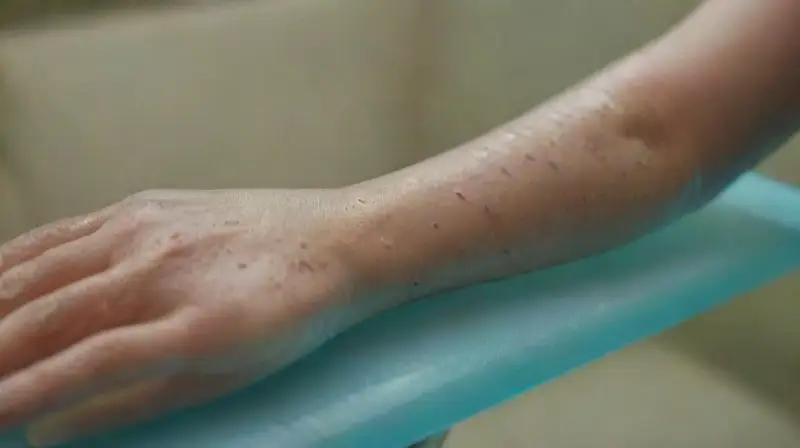Procedural pain is a common challenge faced by patients undergoing medical treatments, often leading to distress and discomfort. Managing this pain effectively is essential to improve patient satisfaction and treatment adherence. Healthcare professionals continuously seek strategies to minimize pain during procedures, emphasizing the importance of understanding the factors that influence pain perception. Among these, experience plays a crucial role in shaping how patients perceive and cope with procedural discomfort.
Over time, both patients and clinicians can develop ways to lessen pain through familiarity and skill. Patients who have undergone previous procedures may become more accustomed to the sensations, reducing anxiety and perceived pain levels. Simultaneously, clinicians with extensive experience tend to perform procedures more efficiently, which can also diminish trauma and discomfort. Recognizing the impact of experience is vital to optimizing pain management strategies in medical settings.
The Psychological Impact of Experience
Previous encounters with medical procedures can significantly influence a patient’s attitude towards future treatments. When patients have positive, less painful experiences, their confidence and trust in healthcare providers tend to grow. This often results in lower anxiety levels, which are closely linked to the perception of pain.
Conversely, negative or painful past experiences may heighten fear and apprehension. Such emotional responses can amplify the sensation of pain, creating a cycle of increased discomfort during subsequent procedures. Therefore, addressing psychological factors and fostering a supportive environment can help mitigate the heightened pain perception associated with prior negative experiences.
Pain Perception and Familiarity
Familiarity with a procedure can lead to a decrease in anxiety, which is a key contributor to pain perception. When patients know what to expect, they often feel more in control, and this sense of predictability can reduce their overall discomfort during the process.
Repeated exposure to procedures can also desensitize patients to certain stimuli that might otherwise be perceived as painful. This acclimatization helps in lowering the intensity of pain felt during future interventions. Healthcare providers can facilitate this by providing clear explanations and gradual exposure when appropriate.
Skill and Technique of Providers

The experience of healthcare professionals directly impacts the quality of care and procedural outcomes. Seasoned clinicians are better equipped to perform procedures swiftly and accurately, minimizing tissue trauma and associated pain. Their precise technique can also reduce the likelihood of complications that might increase discomfort.
Training and continuous practice enable clinicians to refine their skills, leading to more gentle and patient-centered approaches. Using evidence-based pain management techniques in tandem with procedural expertise further enhances patient comfort and overall experience.
The Role of Preparation and Education
Patient education before procedures can significantly influence pain perception. When patients are adequately prepared, understand what to expect, and are involved in decision-making, they tend to report lower pain levels and greater satisfaction.
Providing detailed information and reassurance helps lessen fear, which is often a barrier to pain tolerance. Additionally, pre-procedure training in relaxation techniques or distraction methods can serve as effective adjuncts to reduce discomfort during procedures.
Technological Advances and Experience

Advancements in medical technology have introduced new tools and techniques that can help reduce procedural pain. For instance, the use of ultrasound-guided injections enables more precise targeting, decreasing tissue damage and discomfort.
Professionals with extensive experience are more likely to incorporate these innovations effectively. Their familiarity with emerging devices and methods allows them to optimize procedure protocols, ultimately benefiting patient comfort and outcomes.
The Importance of Patient-Centered Care
Adopting a patient-centered approach involves tailoring procedures to individual needs and preferences. Experienced practitioners are typically better at listening and adjusting techniques to comfort levels, which can diminish procedural pain.
Encouraging open communication and empathy fosters trust and cooperation, leading to a less stressful experience for patients. This holistic focus on comfort and individualization plays a pivotal role in lowering perceived pain during medical interventions.
Conclusion
Experience, both from the patient’s perspective and the healthcare provider’s practice, is a fundamental factor in reducing procedural pain. Familiarity with procedures, combined with skilled technique and effective communication, helps create a more comfortable environment for patients.
By investing in education, training, and adopting innovative technologies, healthcare providers can further enhance their ability to manage procedural discomfort. Emphasizing experience as a core component of pain mitigation strategies ultimately leads to better patient outcomes and a more compassionate healthcare experience.







